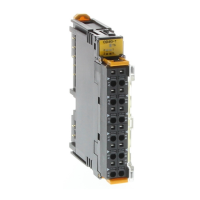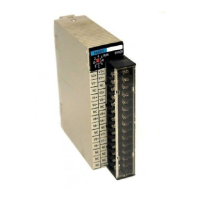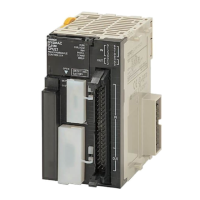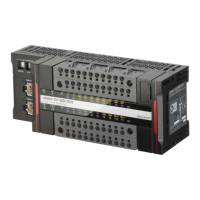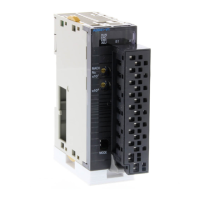90
Overview of Analog I/O Units Section 5-1
5-1 Overview of Analog I/O Units
This section provides an overview of Analog I/O Units, including details on
functions and setting methods for each Unit.
5-1-1 Analog I/O Units
In addition to the functions common to the GRT1 Series (backup, restore,
online conversion, etc.), other functions specific to Analog I/O Units (scaling,
peak/bottom hold, etc.) are available. Analog Input Units are also able to inter-
nally perform math on analog input values, which previously required ladder
programming in the host PLC. Analog data can be selected from the six val-
ues obtained from math operations and allocated as I/O in combination with
Generic Status Flags or other status information. The Setting Tool can be
used to allocate this status data, and to set functions specific to Monitor/Ana-
log I/O Units and perform monitoring.
5-1-2 Comparison with Earlier Models
Analog Input Units
Unit GRT1 Series DRT2 Series
Model GRT1-AD2 DRT2-AD04
Analog points 2 inputs 4 inputs
Input range (signals) 0 to 5 V, 1 to 5 V, 0 to 10 V, –10 to 10 V, 0 to 20 mA, 4 to 20 mA
AD conversion cycle 2 ms/2 points By setting the number of conversion
points (1 to 4 points), the conversion
cycle can be shortened (e.g., 4 points: 4
ms max.)
Note The conversion cycle will be
slightly different when the math
operations are used.
AD conversion data 0 to 5 V, 1 to 5 V, 0 to 10 V, 0 to 20 mA, 4 to 20 mA: 0000 to 1770 hex
–10 to 10 V: F448 to 0BB8 hex
Note Two’s complement
Resolution 1/6,000 (full scale)
Unit power supply Supplied from slice bus. Supplied from communications power
supply.
Communications power supply cur-
rent consumption
None 90 mA max.
Overall accuracy 25°C Voltage input: ±0.3% FS; Current input: ±0.4% FS
−10 to 55°C Voltage input: ±0.6% FS; Current input: ±0.8% FS
Allocated I/O data Default: Analog input values for 2 points
The Setting Tool can be used to allocate
peak value, bottom value, top value, val-
ley value, rate of change, comparator
results, etc.
Default: Analog input values for 4 points
The DeviceNet Configurator can be used
to allocate peak value, bottom value, top
value, valley value, rate of change, com-
parator results, Generic Status Flags,
etc.
Input switching (Sets number of AD
conversion points)
Supported. (Set using DIP switch: Select
either 1 or 2 points)
Supported (Set using DeviceNet Config-
urator: Select from 1 to 4 points)
Input range switching Using DIP switch: Inputs 0 and 1 share
setting.
Using Setting Tool: Can be set sepa-
rately.
• Using DIP switch: Inputs 0 and 1 share
setting, Inputs 2 and 3 share setting.
• Using DeviceNet Configurator: Inputs 0
to 3 set separately.
Node address setting No setting required. Set using the rotary switches or the
DeviceNet Configurator.
Baud rate setting No setting required. Automatically detected: Uses baud rate
set for Master Unit.
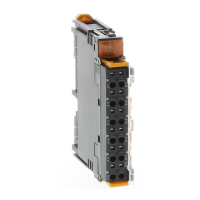
